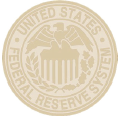Economy

Fed Beige Book: Economy Still Growing, So Are Recession Fears
Written by David Schollaert
July 17, 2022
The US economy has expanded at a modest pace since mid-May, the Federal Reserve said in its latest Beige Book report. But while the economy continues to grow, it has been exhibiting signs of a slowdown over the past month. And recession concerns are rising, the report said.

Several districts reported growing signs of a slowdown in demand, and five districts noted concerns about an increased risk of a recession.
Substantial price increases were also reported across all districts, with most expecting the current trend to last at least through year end.
Though firms are for the most part reporting their pricing power as steady, most districts said consumer spending moderated as higher food and gas prices dented household income.
The labor market also remains tight, with one-third of districts saying employers were considering or had already given workers bonuses to offset high inflation.
The release of the Fed report came as the government reported consumer prices rose at an annual rate of 9.1% in June, the highest level since late 1981. The increase was driven largely by energy and food costs, but housing was also a large contributor.
The beige book survey noted the rising prices were substantial across all districts. Some reported moderation in areas like construction supplies, but “most contacts expect pricing pressures to persist at least through the end of the year,” the report said.
District Highlights from the July 2022 Beige Book:
Boston – Business activity expanded at a modest pace. Employment was flat as turnover remained high and wages grew at an above-average rate. Prices increased at an above-average pace. The outlook turned more cautious or even pessimistic in some cases. Most saw ongoing inflation (and efforts to control it) as posing significant threats to activity moving forward.
New York – Economic growth slowed to a crawl in the latest reporting period, as demand from households and businesses weakened amid ongoing labor shortages, supply backlogs, and elevated Covid levels. Tourism continued to strengthen, while consumer spending and manufacturing activity was flat. Businesses continued to report widespread increases in selling prices, input prices, and wages. Optimism about the near-term outlook has eroded further.
Philadelphia – Business activity continued to grow slightly. Manufacturing, among other sectors, appeared to decline. Increased chatter about a future recession has caused growth in employment, wages, and prices to subside slightly.
Cleveland – Business activity declined slightly as households and firms grappled with higher costs and rising interest rates. Contacts expected further weakening in the near term. Labor market conditions remained tight, although the share of firms that increased staff levels or raised wages has decreased since the start of 2022. Reports of higher non-labor costs were widespread, and most firms raised prices.
Richmond – The regional economy grew modestly over the last several weeks, although there were some emerging signs of slowing demand. Consumer spending remained generally solid, while manufacturers and service providers reported slowing to modest growth. Commercial and residential mortgage lending was hindered by rising interest rates. Labor markets were tight, and price growth remained elevated.
Atlanta – Economic activity grew modestly. Labor markets were tight, and wage pressures continued. Non-labor costs rose. Retail sales were solid. Leisure travel activity remained robust. Housing demand weakened. Commercial real estate conditions were mixed. Manufacturing activity was strong. Demand for transportation services was mixed. Banking activity slowed.
Chicago – Economic activity increased slightly. Employment increased moderately. Business spending was up modestly. Consumer spending rose slightly. Manufacturing and construction as well as real estate declined slightly. Wages and prices rose rapidly, while financial conditions tightened somewhat. Agriculture income expectations for 2022 were little changed.
St. Louis – Economic conditions have improved at a modest pace since the previous report. Labor shortages eased slightly but continued to place upward pressure on wages. Prices for energy and intermediate goods rose, but increases were passed through at a lower rate than in previous months. Home buying slowed, and consumer demand for services rose.
Minneapolis – The region’s economy has grown modestly since mid-May. Labor demand weakened but remained at a high level, while wage and price pressures remained strong. Manufacturing and services activity grew. Construction contacts reported little change, and real estate contacts reported modest declines. Minority and woman entrepreneurs expected flat to increased sales in the next month but have lowered their profit expectations.
Kansas City – Growth slowed to a modest pace, with mixed performance across segments of the regional economy. Job growth was strong, but consumer spending softened. Several businesses indicated that they began to offer pre-paid gas cards or direct payments to offset rising gas prices for workers. Rising interest rates deterred new growth in residential real estate and put some initial pressure on community banks’ liquidity positions.
Dallas – Economic growth in the district slowed to a modest pace partly due to elevated prices, rising interest rates, and higher uncertainty hampering demand in manufacturing, housing, and services. Input costs rose at a rapid clip, though pass-through was becoming more difficult for firms. Outlooks were mostly negative and highly uncertain owing to concerns about a further slowdown in demand.
San Francisco – Economic activity strengthened modestly over the reporting period. Overall labor market conditions remained tight. Wages and price levels increased further. Retail sales moderated somewhat while demand for discretionary services fell. Conditions in the agriculture and manufacturing sectors were mixed. Residential real estate activity slowed, and lending activity was unchanged.
By David Schollaert, David@SteelMarketUpdate.com

David Schollaert
Read more from David SchollaertLatest in Economy

Steel groups welcome passage of budget bill
Steel trade groups praised the passage of the Big Beautiful Bill (BBB) in Congress on Thursday.

Industry groups praise Senate for passing tax and budget bill
The Steel Manufacturers Association and the American Iron and Steel Institute applauded the tax provisions included in the Senate's tax and budget reconciliation bill.

Chicago PMI dips 0.1 points in June
The Chicago Purchasing Managers Index (PMI) slipped 0.1 points to 40.4 points, in June.

Multi-family pullback drives housing starts to 5-year low in May
US housing starts tumbled in May to a five-year low, according to figures recently released by the US Census Bureau.

Architecture firms still struggling, ABI data shows
Architecture firms reported a modest improvement in billings through May, yet business conditions remained soft, according to the latest Architecture Billings Index (ABI) release from the American Institute of Architects (AIA) and Deltek.
